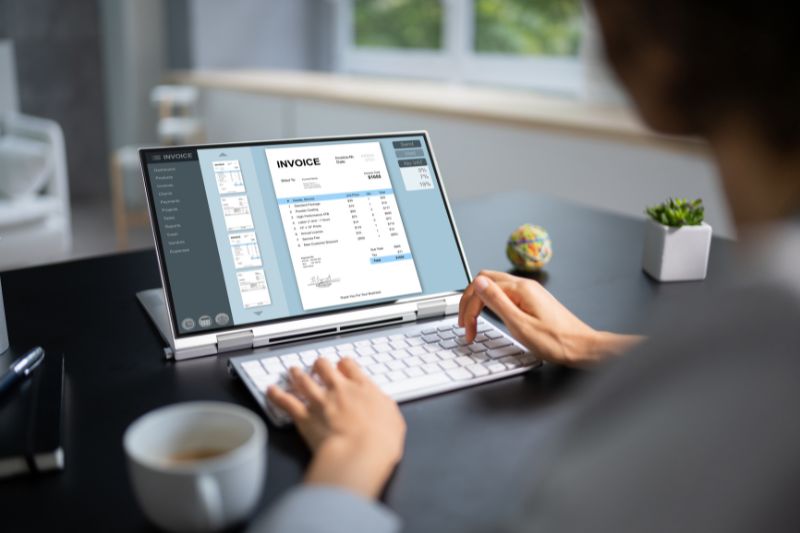How Reconciliation Automation Unlocks Competitive Advantage

While digitalization continues to be a top priority for many organizations, a significant number still depend heavily on manual processes. 76% of finance leaders acknowledge that their finance teams spend a considerable amount of time on manual processes.[1]
When accounting departments grapple with non-standardized and poorly documented processes, one of the areas most affected is reconciliations. This causes a delay in getting accurate financial data, which in turn makes cash flow planning difficult.
For accounts receivable departments, reconciliations are a critical component of your accounting workflow. Without reconciliations, errors are commonplace when issuing customer statements.
Moving accounting reconciliations from spreadsheets to cloud solutions with automation capabilities will help you avoid financial mismanagement.
Automation solutions allow your companies to standardize methods to verify the accuracy of your income and balance sheet accounts.
Automation Saves Businesses from Sinking, Here’s Why
Automated reconciliations use software to take over the manual elements of the reconciliation process. With technology doing most of the heavy lifting, you can complete reconciliations with less time and effort. You have a dependable process for the accounting close and your team will have enough time to check and review transactions.
In a traditional accounting process, accounting teams struggle with completing account reconciliations on time. The workload often peaks during cut-off periods, placing the invoice-in-charge in a perpetual state of emergency.

Accounting teams constantly feel burned out and overwhelmed with the almost endless work.
Managers want the reports quickly. Other departments keep following up on delayed invoices. Vendor inquiries constantly pour in to check on payment and invoice updates.
But challenges extend beyond the accounting teams; decision-makers and business owners face their struggles. In a volatile economy, reliable and updated information is crucial, and relying on outdated or unreliable data jeopardizes the company’s health and reputation.
Today, accounting automation – especially in reconciliation – is a must-have for any modern business. Financial reports tend to be less reliable and error-prone with no automation in place.
In fact, only 38% of finance professionals trust their financial reports. More than half (56%) blamed their doubts on the lack of automated checks and controls, reliance on spreadsheets, and the manual data extraction process, while 41% cited manual data entry.[2]
What Types of Accounting Reconciliation Can You Automate?
Reconciliation happens in various stages of the accounting process. Automation can ease the workload of your accounting team and speed up financial report processing.
Here are some of the most common reconciliation processes where automation makes a big difference:
Bank Reconciliation
Reconciling bank accounts manually is a long and painful process since you have to wait for bank statements at the end of the month. Online accounting software like QuickBooks or Xero introduced account reconciliation automation to reduce the effort required during your financial close.

Using accounting software speeds up the matching process since you can:
- integrate bank feeds
- reconcile transactions like bank fees in bulk
- set up rules to suggest a match for charges from specific vendors to an expense account.
- match bank transactions to vendor invoices
Automation makes your bank reconciliation process faster since you don’t have to enter a journal entry for every item in your bank statement. You can reduce human error since there’s less manual intervention.
Pro Tip: Link your accounting software to expense management software like Envoice. Explore how Envoice speeds up reconciliation automation for free. Sign up for a free demo now.
Accounts Payable Reconciliation
Reconciling all vendor invoices to bank and credit card statements is another critical task for the finance department. Reviewing which invoices are still outstanding often requires various financial processes.
In a manual environment, accounting teams do transaction matching between invoices received from vendors and payments made. Often, this process includes credit card reconciliation since many companies pay for purchases and other operating expenses using a credit card.
Automation transforms the manual process of reconciling accounts payable into a more efficient workflow. Envoice, an AI-powered, expense management reconciliation software, automates the AP reconciliation process so you can:
- decrease team time spent on repetitive manual tasks like entering invoices into the accounting software
- manage all vendor invoices in one workflow
- access real-time financial data and see which invoices are still outstanding at any point in time
Travel and Expense Reimbursement

As live events restart, business travel is likely to increase, and so would expenses related to official company trips. Despite the price increase in travel-related expenses, only 45% of businesses limited travel due to cost considerations.[3]
Businesses have been reducing cost-cutting measures like choosing more affordable flights and low-cost lodging as a price mitigation strategy.
Automatic reconciliation in T&E reimbursement is an effective way to control travel costs and other employee reimbursements. Manual reconciliation of T&E requires gathering receipts, sending them for approval, adding journal entries, and reimbursing the employee.
With automation, employees who went on the trip can snap a photo of the receipt with the Envoice mobile app, update the required field, and send the T&E request for approval. You can customize rules based on your expense policy to increase compliance and flag all non-compliant expenses without effort.

Download the Envoice app today and see how efficient it could be to complete your expense reports even if you’re on the road.
Automating reimbursements allows employees to complete expense reports faster. At the same time, you can collaborate with the rest of the team by adding comments and notes related to the expense.
Transform Account Reconciliation with Automation
Account reconciliation is a necessary step in financial reports. Reconciling accounts may be routine, but necessary.
Leveraging technology for accounts reconciliation enhances operational efficiency by changing how you process your financial data. Staying competitive in a dynamic landscape requires quick access to accurate financial data, ideally, in real-time.
e-Residency Hub, an accounting firm, deployed Envoice to automate reconciliation. Here’s how operations change after introducing technology into their financial process.
Process Documents 2x Faster
Automation allows you to leverage technology to streamline a complex and labor-intensive process of matching data from multiple sources. Since your team can reconcile accounts faster, they can dedicate more time to strategic activities. Automation can boost productivity – allowing you to service clients without adding headcount.
As a company assisting clients with establishing companies in Estonia and managing their bookkeeping, e-Residency Hub needed an efficient accounting process. With Envoice, the company sped up document processing by at least 2x by simply automating data capture, categorization, and other processes.
Automation brings in substantial savings in terms of labor hours and resources. Cutting down time spent on non-value-added activity could save you hundreds if not thousands.

Make Receipt Submission Easier
e-Residency Hub managed to provide excellent service to 800 clients in about 120 countries. Managing information submitted by clients would have taken up considerable time if done manually.
Envoice simplified the process by allowing clients to send receipts and invoices through the mobile app, email, or by uploading information directly into the invoicing platform.
Having all information in one place saves time since e-Residency Hub’s accountants won’t have to hunt for information across multiple channels.
Enhance Invoice Visibility
Managing client data through the Envoice platform makes it easier for e-Residency Hub and its clients to know which invoices are still outstanding. Clients can also add information related to an invoice as comments or notes to explain irregular transactions.

Create Scalable Accounting Workflows
When companies scale rapidly back-office teams like accounting almost always struggle to keep up. With Envoice, the company increased their clients, without compromising service quality. Automation enabled the firm to achieve annual growth of 40% without increasing its workforce.
Without automation, the business would need to double the existing workforce to meet deliverables and provide excellent service.
By making Envoice part of their accounting workflow transformation, e-Residency Hub automated account reconciliation simplified manual and repetitive processes. Minimizing human intervention in repetitive and recurring tasks resulted in efficient workflows where the company’s highly skilled accountants focused on strategic planning and financial analysis.
Streamline Accounting Processes with Envoice
Reconciliation automation creates operational efficiency, mitigates risks, and provides valuable business insights. Accuracy and adaptability are crucial components in running a profitable business – and achieving this is almost impossible without automation.
Start your journey towards creating strategic and efficient accounting workflows. Make Envoice part of your digital transformation and bring your business fully into the 21st century. Schedule a demo today.
[1] CFO Dive
[2] SF Magazine
[3]Deloitte
STAY ALWAYS TUNED
Subscribe to newsletter
Still not sure?
- Don’t spend time on manual work
- Streamline bookkeeping processes with AI
- Automate invoice processing
- Integrate with the tools you rely on every day












